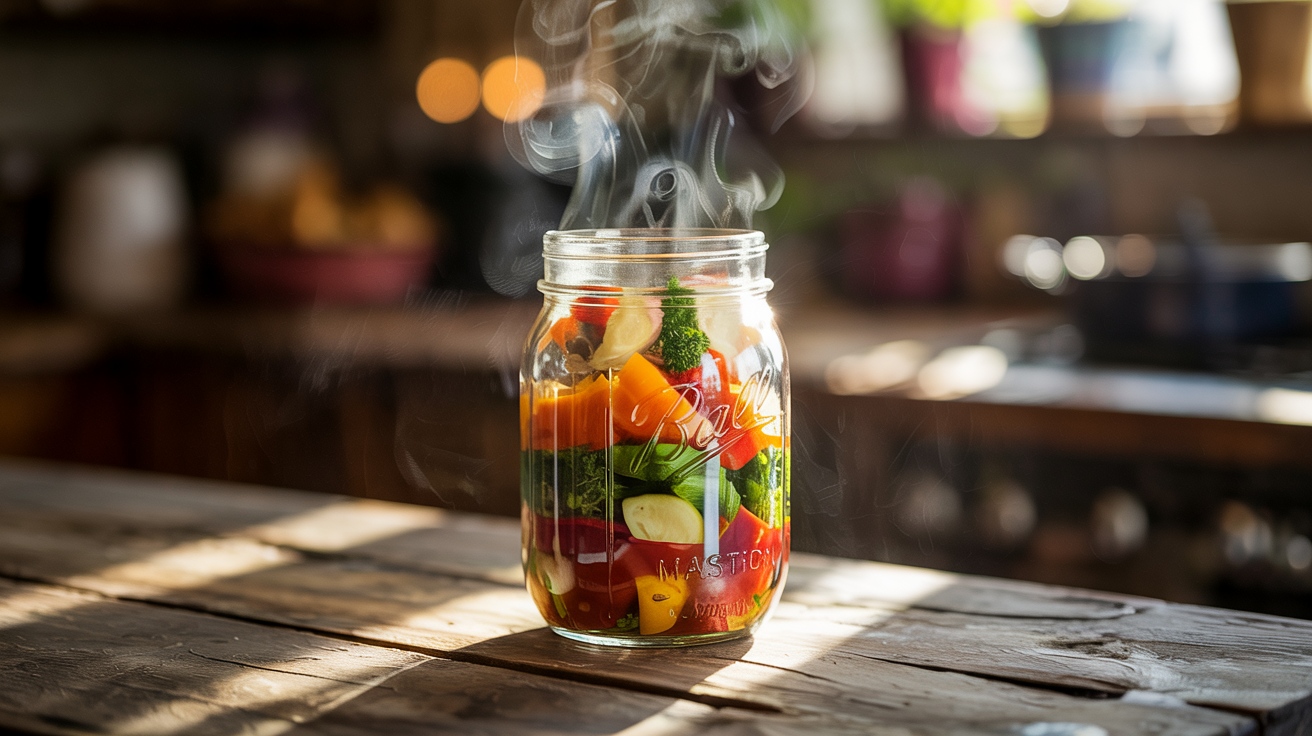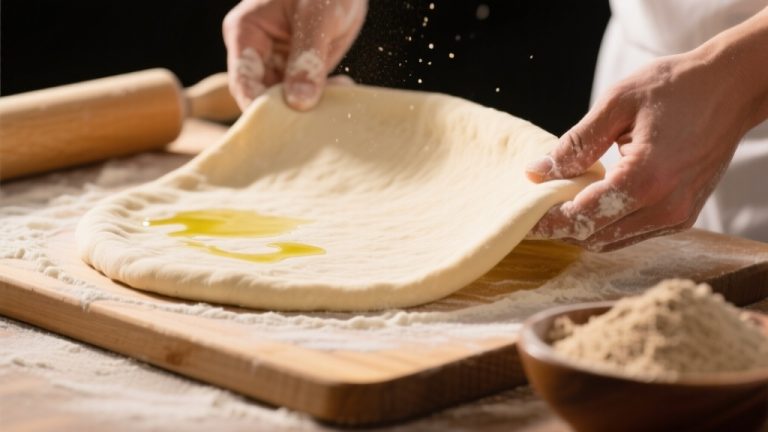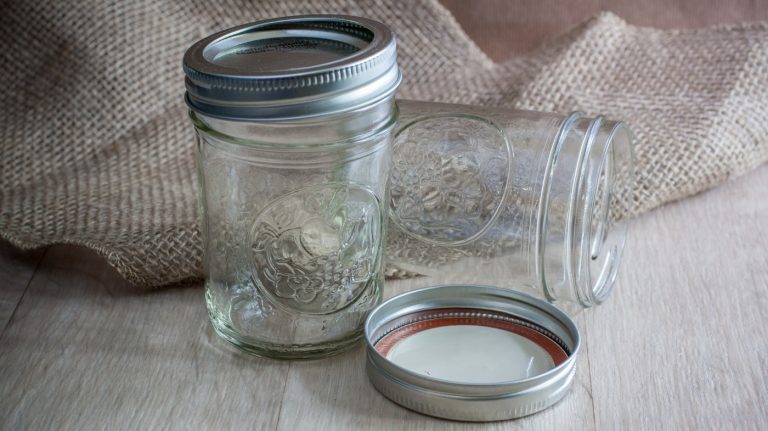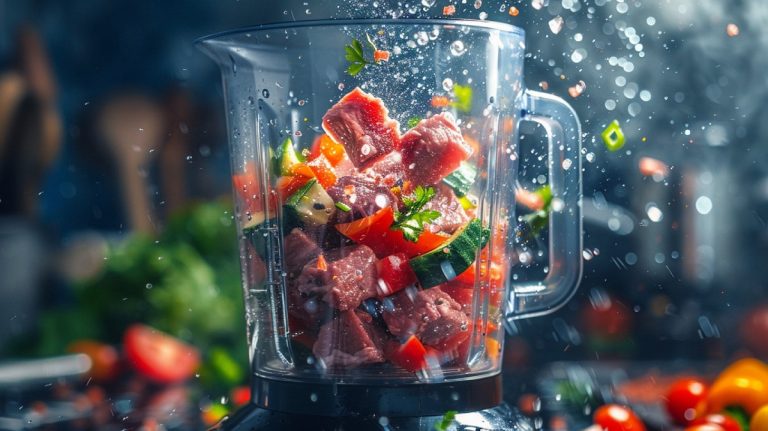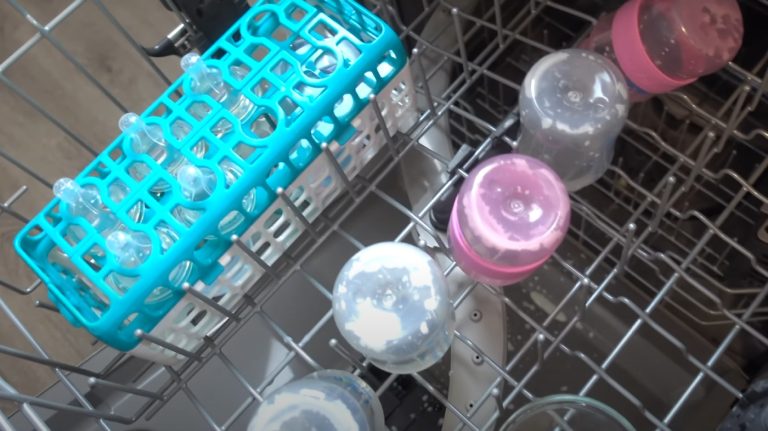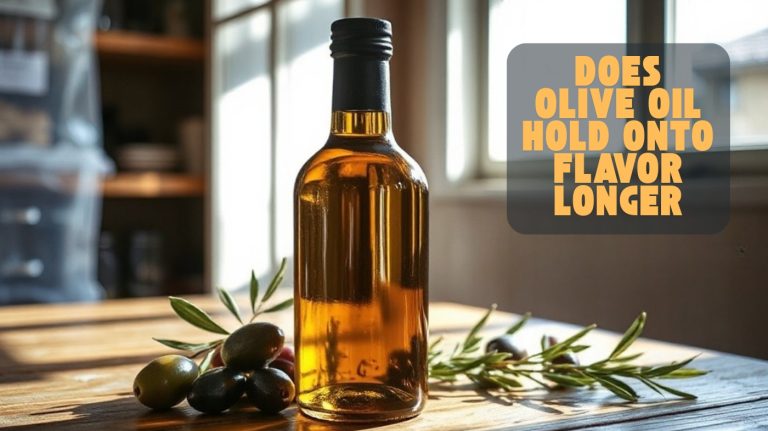Are Mason Jars Heat Resistant? Things You Need to Know
Mason jars aren’t heat resistant and can shatter if exposed to rapid temperature changes. Made from soda-lime glass, they’re susceptible to thermal shock, which can occur with quick heating or cooling.
It’s recommended to keep hot contents below 190°F and avoid sudden temperature shifts exceeding 100°F per hour.
For high-temperature use, consider alternatives like borosilicate glass or ceramic containers. Understanding these limitations can help guarantee your canning and cooking practices remain safe and effective.
Key Takeaways
- Mason jars can withstand temperatures up to 392°F, but should be gradually heated to prevent thermal shock.
- Hot contents should be kept below 190°F to avoid breakage during canning.
- Rapid temperature changes exceeding 100°F per hour can lead to cracking or shattering of mason jars.
- Mason jars are not suitable for oven use due to the risk of thermal shock and breakage.
- Inspect jars for cracks or defects before use, as flaws increase the risk of thermal shock and breakage.
Mason Jar Composition
Mason jars, often seen as the quintessential canning vessel, are crafted from soda-lime glass, which consists of lime, silica, and soda.
This specific glass composition provides the jars with durability and clarity, making them ideal for preserving food.
The production of mason jars is energy-intensive, contributing to high greenhouse gas emissions that can be mitigated through improved recycling practices.
The lids are made from stainless steel, incorporating iron ore, chromium, nickel, manganese, and silicon, ensuring a secure seal. Additionally, the gaskets are crafted from silicone and rubber, providing flexibility and a tight fit.
Mason jars come in various shapes and sizes, including Regular Mouth and Wide Mouth designs, catering to diverse canning needs.
While silica mining has minimal environmental impact, the production of lime and tin for lids poses energy-intensive challenges. Proper recycling is essential for minimizing waste.
Thermal Shock and Its Effects
Understanding the composition of Mason jars highlights their strengths and vulnerabilities, particularly regarding thermal shock.
This phenomenon occurs when sudden temperature changes cause uneven expansion or contraction in materials, leading to potential failure.
Glass, being brittle, is especially susceptible. Placing a hot jar in a cold environment—or vice versa—can trigger this stress. Flawed jars, with cracks or scratches, further increase the risk.
Pre-existing cracks in the glass can significantly heighten the likelihood of breakage, especially under thermal stress.
Breakage usually manifests as clean fractures around the base, extending upwards based on severity. Such failures can contaminate food, rendering it unsafe.
To mitigate these risks, gradually adjust temperatures, inspect jars for damage, and use appropriate tools to prevent micro-scratches.
Temperature Limits for Mason Jars
Mason jars can endure temperatures up to 392°F, but you need to apply heat gradually to avoid breakage. When filling jars with hot contents, keep the temperature below 190°F for safety.
Rapid heating or cooling poses risks, as temperature changes exceeding 100°F per hour can lead to shattering.
To ensure safe usage, it is important to remember that mason jars are made from soda-lime glass, which allows them to withstand high temperatures when heated slowly.
Maximum Temperature Endurance
While it’s tempting to use mason jars in high-heat situations, their maximum temperature endurance is limited. Made from soda-lime glass, these jars can withstand temperatures up to 392°F (200°C) with careful heating.
However, they’re not suitable for oven use due to the risk of thermal shock. For hot filling, it’s advisable to keep temperatures below 190°F (88°C) to prevent breakage.
Rapid temperature changes can lead to cracks; you should avoid exceeding a 100°F (56°C) differential per hour. Unlike tempered glass, mason jars are annealed, which makes them more vulnerable to thermal stress.
Primarily designed for canning, they perform best under controlled conditions, not extreme heat. Additionally, writing effectively is crucial for conveying important safety information in contexts like this.
Safe Heating Practices
When using mason jars for heating, it’s essential to adhere to specific temperature limits and practices to guarantee safety and prevent breakage.
Here are key guidelines to follow:
- Microwave Use: Verify the jar is labeled microwave-safe and remove metal lids before heating.
- Temperature Adjustments: Gradually shift temperatures; avoid moving jars from extreme cold to high heat. This practice helps to minimize the risk of glass breakage.
- Check for Damage: Inspect jars for cracks or chips before use, as damaged glass is more prone to breakage.
- Oven Safety: Avoid using mason jars in the oven, as they aren’t typically made from tempered glass and can shatter under unpredictable temperatures.
Risks of Rapid Heating
Heating mason jars requires careful attention to temperature limits to prevent breakage. These jars can withstand temperatures up to 392°F, but rapid heating poses significant risks.
Made from soda-lime glass, mason jars are highly sensitive to thermal shock; quick temperature changes can lead to cracking or shattering.
It’s advisable to avoid using them in the oven, as this increases the likelihood of breakage. Additionally, outdated practices can exacerbate risks associated with heating mason jars improperly.
In microwaves, you should exercise caution to prevent sudden temperature shifts. Gradually change temperatures, ideally not exceeding 100°F per hour, to minimize risks.
Always inspect jars for defects before use, as any imperfections can exacerbate the chance of failure when exposed to heat. Following these guidelines guarantees safer heating practices.
Safe Heating Practices
To safely heat Mason jars, you need to focus on gradual heating techniques to avoid thermal shock. Start by warming the jars in warm water before exposing them to higher temperatures, and always remember to remove metal lids when using a microwave.
This is important because tempered glass is designed to withstand greater temperature changes without breaking, unlike standard glass. Additionally, using non-porous materials can help ensure that your containers maintain their integrity during heating.
Gradual Heating Techniques
Although mason jars are known for their durability, proper techniques for gradual heating are essential to prevent thermal shock and potential breakage.
Here are some safe practices you should follow:
- Water Bath Method: Use a water bath canner for gradual heating during canning.
- Slow Temperature Increase: Start with warm water, then gradually increase to hot water to minimize shock. This approach is particularly important because heat-resistant glass can handle gradual temperature changes without breaking.
- Avoiding Extreme Temperatures: Keep jars away from sudden temperature changes to prevent cracking.
- Freezing and Storage: If freezing, leave space for expansion to avoid damage.
Microwave Precautions
When using mason jars in the microwave, it’s essential to adhere to specific precautions to guarantee safety and avoid damage.
First, verify your jar is labeled microwave-safe; annealed glass can handle short heating periods but isn’t suitable for rapid temperature changes. Newer mason jars have a microwave-safe symbol, indicating they are designed for microwave use.
Always remove metal lids and rings before heating, as they can cause sparks and damage your microwave. Opt for microwave-safe plastic or silicone lids if necessary.
Additionally, avoid thermal shock by letting jars reach room temperature if they’ve been in the freezer. Finally, be cautious—mason jars can become extremely hot during use, so handle them with care to prevent burns.
Using Mason Jars in the Microwave
If you’re considering using mason jars in the microwave, it’s crucial to confirm they’re labeled as microwave-safe. To guarantee safe usage, follow these precautions:
- Inspect jars for any damage, like cracks or chips, before microwaving.
- Remove metal lids and rings to prevent sparks during heating.
- Heat contents in short intervals, such as 30 seconds, to avoid overheating. Using oxygen absorbers can help maintain food freshness before microwaving.
- Allow frozen jars to reach room temperature first to prevent thermal shock. Additionally, ensure that you understand the importance of microwave safety when using glass containers to avoid potential hazards.
Canning and Food Preservation Techniques
Using mason jars for canning and food preservation is a practical choice due to their heat resistance and airtight sealing capabilities.
Made from soda-lime glass, these jars withstand temperatures up to 392°F (200°C), making them suitable for safe canning.
Additionally, it’s important to ensure that the jars are heat-resistant glass to prevent any risk of shattering during the canning process. Properly sealed mason jars create airtight seals that are essential for preserving the freshness of stored food.
The canning process requires you to sterilize the jars, fill them with food, and seal them using a water bath or pressure canner to create a vacuum seal. This airtight seal is essential for preventing bacterial growth, achieved with lids fitted with rubber rings.
Risks of Rapid Temperature Changes
Although mason jars are designed to withstand significant heat, rapid temperature changes can lead to serious risks, including cracking and shattering.
Here are key considerations to keep in mind:
- Thermal Shock: Soda-lime glass is prone to cracking under rapid temperature fluctuations.
- Heating Speed: Heating jars too quickly is a common cause of shattering.
- Temperature Differential: The safe thermal shock differential for canning jars is around 90°F.
- Oven Use: Mason jars should never be used in ovens due to inconsistent temperatures. Additionally, the Texas Digital Newspaper Program provides valuable insights into historical practices, which can inform modern canning techniques.
Frequently Asked Questions
Can I Use Mason Jars for Baking in the Oven?
You shouldn’t use Mason jars for baking in the oven. They’re made from annealed glass, which isn’t designed to withstand high temperatures or sudden changes. Heating them can cause thermal shock, leading to cracks or explosions.
Manufacturers like Ball and Kerr explicitly advise against this practice due to safety risks. Instead, consider using oven-safe glass containers or explore creative ways to use Mason jars for cold dishes, ensuring safety in your kitchen.
Are There Specific Brands of Mason Jars That Are Better for Heat Resistance?
Imagine traversing a forest of jars, each representing a brand. In this domain, Ball Mason Jars stand tall, revered for their durability and quality. Aussie Mason Jars follow closely, offering a slight twist in dimensions.
Le Parfait, Kilner, and Weck present various options, each with unique compositions. However, remember, while they boast some heat resistance, their safety hinges on how you use them. Choose wisely, and make certain you respect their limits to avoid mishaps.
Can I Freeze Food in Mason Jars?
Yes, you can freeze food in mason jars, but you need to take precautions. Always leave about an inch of headspace for expansion and use straight-sided jars to reduce breakage risk.
Make sure the food cools to room temperature before freezing, and keep the lids loose until the contents are frozen. To thaw, do it slowly in the refrigerator to prevent thermal shock, ensuring your jars remain intact and safe for use.
What Happens if a Mason Jar Cracks During Heating?
If a mason jar cracks during heating, it poses serious risks. You’ll need to discard the jar immediately to prevent injury from sharp edges and avoid bacterial contamination. The contents may also spoil if exposed to air.
Cracked jars can’t be safely used for canning or storage, as they compromise food safety. Always handle jars carefully to minimize stress, and avoid rapid temperature changes to reduce the chances of cracking.
Are There Mason Jars Designed for High-Temperature Use?
While you might find yourself captivated by the idea of high-temperature jars, most Mason jars aren’t designed for such use. They’re typically made from soda-lime glass, which can withstand temperatures up to 392°F but lacks thermal shock resistance.
Unlike borosilicate glass, these jars can crack under rapid temperature changes. If you need jars for high-heat applications, consider specialized heat-proof options instead to guarantee safety and durability in your culinary adventures.
Safely Use Mason Jars for Canning and Preservation
In summary, while mason jars can withstand moderate heat, they aren’t invincible. Think of them as the tortoise in the fable; steady and reliable, but not suited for extreme conditions.
To ensure your jars don’t crack under pressure, adhere to safe heating practices and respect their temperature limits.
By doing so, you’ll enjoy the benefits of canning and food preservation without risking the integrity of your jars. Remember, a little caution goes a long way in the kitchen.

